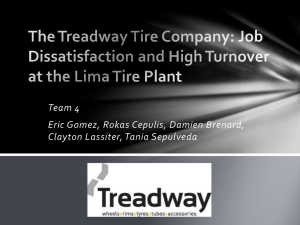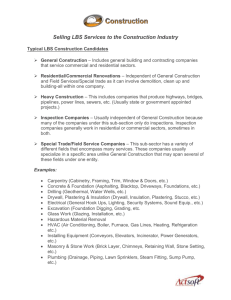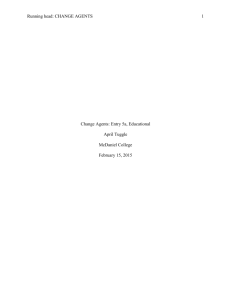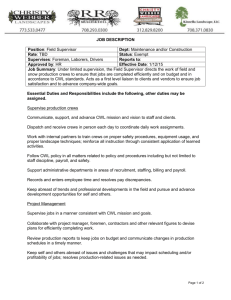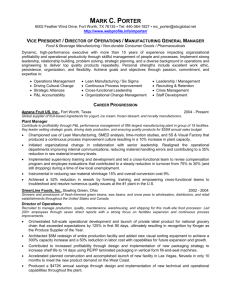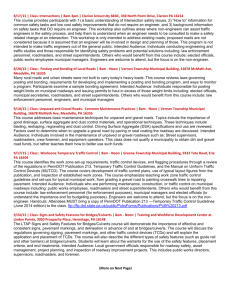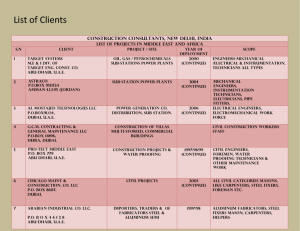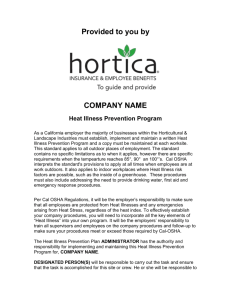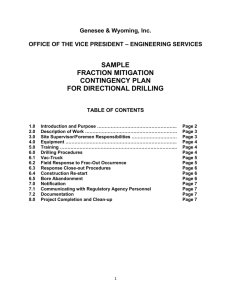Kudos on an excellent paper that demonstrates creative mastery of
advertisement
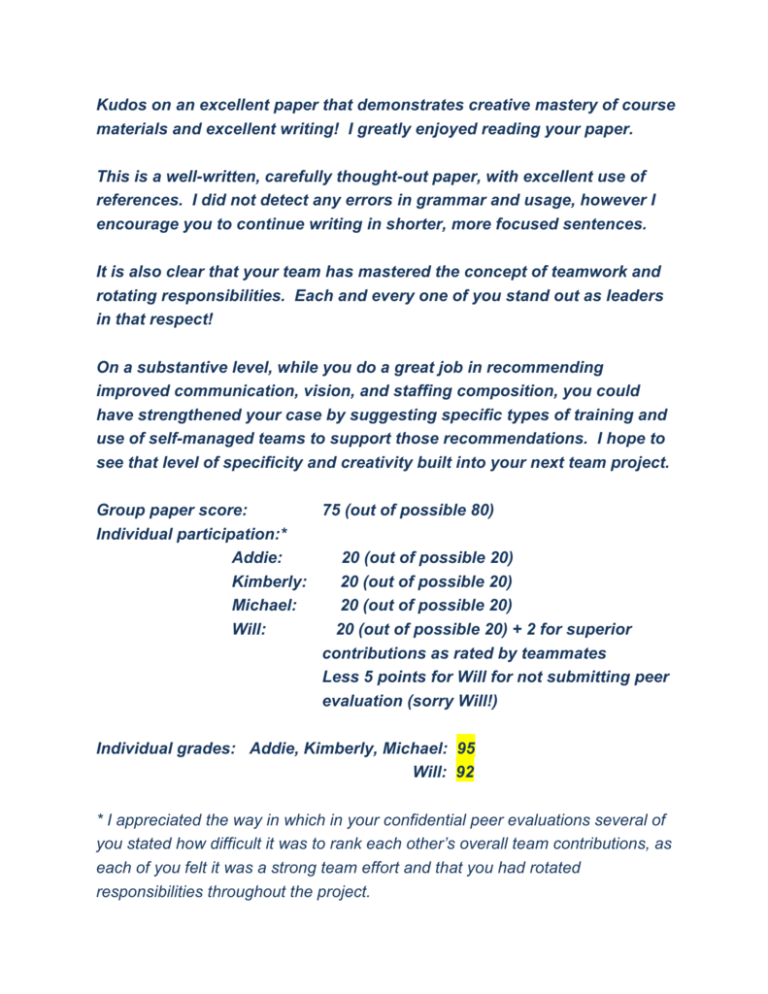
Kudos on an excellent paper that demonstrates creative mastery of course materials and excellent writing! I greatly enjoyed reading your paper. This is a well-written, carefully thought-out paper, with excellent use of references. I did not detect any errors in grammar and usage, however I encourage you to continue writing in shorter, more focused sentences. It is also clear that your team has mastered the concept of teamwork and rotating responsibilities. Each and every one of you stand out as leaders in that respect! On a substantive level, while you do a great job in recommending improved communication, vision, and staffing composition, you could have strengthened your case by suggesting specific types of training and use of self-managed teams to support those recommendations. I hope to see that level of specificity and creativity built into your next team project. Group paper score: 75 (out of possible 80) Individual participation:* Addie: 20 (out of possible 20) Kimberly: 20 (out of possible 20) Michael: 20 (out of possible 20) Will: 20 (out of possible 20) + 2 for superior contributions as rated by teammates Less 5 points for Will for not submitting peer evaluation (sorry Will!) Individual grades: Addie, Kimberly, Michael: 95 Will: 92 * I appreciated the way in which in your confidential peer evaluations several of you stated how difficult it was to rank each other’s overall team contributions, as each of you felt it was a strong team effort and that you had rotated responsibilities throughout the project. Date: November 17, 2009 To: Ashley Wall Treadway Tire From: Will Morris, Mike Moles, Addie Bashorun, & Kimberly Lane OB Consultants, Inc. RE: Theory O Numerous issues continue to arise at the Treadway Tire Company’s Lima Plant primarily due to high levels of job dissatisfaction and turnover among line foremen. These problems are evidenced in part by poor responses in employee surveys and exit interviews. To address these problems, satisfy the needs of the foremen. Accomplish this by giving them credit for their outstanding work and allowing for advancement, improving relations between foremen and union employees, making sure foremen feel empowered and respected by higher level management, and by giving positive criticism and feedback. Paradoxically, empowering the foremen and addressing their needs will bring power and influence to those above them by making foremen more loyal to management and the company. Create a timetable of events for all employees to allow communication and organization to occur. Announcing changes keeps all employees informed without surprises. To apply changes to the organization, restructure using the Theory O gradual implementation approach. Theory O uses clear directives and guidance from upper management through example (Beer & Nohria, 2001). Brandon Bellingham sits at the top of the hierarchy; therefore, he needs to lead by example. Mr. Bellingham should lead by actively listening to the foremen as a start towards changing his relationship with them (Farson & Rogers, p. 281). He must respond to the feelings of individuals by understanding their perspectives. As a leader, he must demonstrate trust on a regular basis to improve employee work performance, problem solving, and employee commitment and behavior (Stahl, Whitener, 2004, p. 466). The more trust given, the higher the motivation to perform one's job, which leads to better execution of one’s duties (Smith, 2009). Mr. Bellingham already demonstrates managerial competence and good role modeling; getting to know, understand, and trust his foremen will further improve morale at the plant. Since foremen serve as the bridge between union employees and management, they should possess roles in leadership. Foremen do a substantial amount of work, including staffing the production team on a daily basis, sustaining safety and health standards, and investigating violations, but lack any amount of authority. When granted greater responsibilities, foremen should practice mindful communication, realize multiple perspectives for different situations, attend to the person who perceives the behavior, and then create a way for one to understand the seriousness of his or her behavior (Osland & Thomas, 2004, p. 297). This will build community between management and fellow employees. Once upper level management, starting with Mr. Bellingham, begins to build vision and exercise a new style of management based on cooperation, trust, and active listening, foremen will set a similar example for those they supervise (Nanus, 1996, p. 462). You need to reevaluate your staffing objectives. Currently, eighty percent of Lima’s foremen come from internal promotions of Lima’s unionized workers. Within the next two years, aspire to reduce that number to about sixty percent. The amount of college graduates in Lima should increase by thirty percent (Beckham & Skinner, 2189). At the same time, foremen often complain of a lack of opportunity for advancement. Encouraging good performance and continued education for current employees would serve as motivation for individuals interested in promotion (Nadler & Lawler, 1977, p. 178). The foremen lack personal attachment to the environment at the plant. You need to create a new image that appeals to employees, particularly to foremen whose voices have thus far been undervalued. Placing value in their interests and ideas should be a focal point; in return they will feel more appreciated. Generally people within any business setting need to be respected and treated as precious human capital (Lawler, 2003, p. 581). Upper management needs to relate to foremen on a personal level to discover these interests and ideas, which will help the motivational process. Having each individual inspired to do their best can increase productivity on assigned tasks, but only when they receive challenging goals and feedback on their progress. Goals without feedback, and feedback without goals, have little effect on motivation (Kouzes & Posner, 2002, p. 183). By listening and developing policies based on individuals’ opinions, outcomes will not only fall in the company’s favor, but also allow the foremen to become an integral part of the company’s success. Achieving success from the bottom up uses the Level Five leadership method, which can only be accomplishable through gradual implementation (Stripling, 2009). While Theory O involves emergent planning, results can manifest themselves quickly. Theory O focuses on the cultural and community aspects of the organization, both of which take time to shape, but lead to direct changes that have direct results. As you begin to allow your foremen to take on leadership roles, you will gain insights to their concerns and ideas. One concern of the employees deals with the hours involved. The employees of Lima work twelve hour shifts, leading to exhaustion, lack of performance, and lack of enthusiasm. If you reduced hours and created a flexible schedule, employees will regain energy and enthusiasm. Cooperation and motivation will increase due to the ability to get sleep and enjoy a personal life. These immediate changes will not completely fix the underlying problem, however. The gradual implementation process focuses on building relationships with each of the employees to build a community within the company. Creating a community atmosphere becomes essential to boost employee satisfaction of the job and bring new ideas together. Sharing ideas and building relationships reduces resistance and encourages employees to succeed (Kante, Stein, and Jick, 1992). Using Theory O to reorganize Treadway Tire Company builds the foundation for a strong, long lasting organization. Focusing on the foremen’s relationships with those above and below them encourages team building and communication. Those who share the work load and bring together multiple ideas to form an outstanding outcome bring high aspirations for everyone involved. Employees with high levels of effectiveness are more likely to be motivated and participative in decision making, cooperative problem solving, and workload sharing (Dyck & Neubert, 2010, p. 432). References: Beckham W. & Skinner, H. (2008). The Treadway Tire Company: Job Dissatisfaction and High Turnover at the Lima Tire Plant. p. 2189 Beer, M. & Nohria, N. (2001). Breaking the Code of Change, Harvard. Dyck, B. & Neubert, M. (2010). “Multistream Natural Bases of Motivation.” Management: Current Practices and New Directions, p. 432. Farson, R. & Rogers, C. “Active Listening,” Organizational Behavior Reader, p. 281. Kanter, R.M & Stein, B., and Jick T.D. (1992). The Challenge of organizational change: how companies experience and leaders guide it. New York: Free Press. Kouzes, J. & Posner, B. (2002). “Recognize Contributions.” Organizational Behavior Reader, p. 183. Lawler, E. (2003). “Why Treating People Right Pays Off.” Organizational Behavior Reader, p. 581. Nadler, D. & Lawler, E. (1977). “Motivation: A Diagnostic Approach.” Organizational Behavior Reader, p. 178, 581. Nanus, B. (1996). “Why Does Vision Matter?” Organizational Behavior Reader, p. 462. Osland, J. & Thomas, D. (2004). “Mindful Communication.” Organizational Behavior Reader, p. 297. Stripling, Bob, Class Discussion, 2009. Stahl, G. & Whitener, E. (2004). “Creating and Building Trust.” Organizational Behavior Reader, p. 466. Smith, Tony, Class Discussion, 2009.
